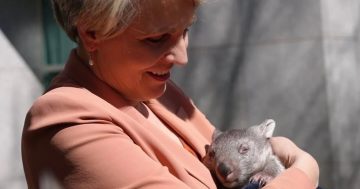
The fashion industry in Australia has been put on notice to turn away from fast fashion or be regulated to do so. Photo: File.
Fast fashion, just like fast food, has a detrimental impact on the natural environment – and the federal minister in charge of all things nature has put the industry on notice.
Environment Minister Tanya Plibersek insists the fashion industry must lift its game and act more responsibly towards the planet.
It must phase out the excessiveness of fast fashion – cheaply made clothes whipped up mainly from the encouragement of influencers and pop marketing – because such clothes end up in landfill.
Even charity shops have to dump fast fashion items because they’re so poorly made they can’t be resold.
Speaking at a fashion event on Wednesday (21 February), Ms Plibersek told the industry that it must be vigorous about spurning fast fashion or the government will regulate the entire sector.
The regulation could go as far as placing a levy on the design and sale of fast fashion.
The minister wants major retailers to voluntarily sign up to reduce their climate impact or be forced to do so by the Federal Government.
She noted some positive steps have already been taken by industry leaders who are genuine about helping the planet, “but environmental standards are still woeful”.
“So woeful, in fact, that the fashion industry is responsible for 10 per cent of humanity’s carbon emissions – more carbon than international flights and maritime shipping combined,” Ms Plibersek said.
“It’s the responsibility of government and the fashion industry to examine how we can be more sustainable in design, the materials used and the role of the circular economy in extending the lifespan of a garment.
“As an industry, there needs to be environmental sustainability of business models and the way products are marketed.
“For consumers, there is a role for all of us to be educated and informed on what is the true cost of our fast fashion, and to adopt more sustainable behaviour.
“It helps when consumers educate themselves about the choices they make. This is happening more and more as people seek to reduce their environmental footprints.”
Consumer preferences alone won’t change the way Australians consume fashion, she said, pointing out that if it’s the fashion industry that makes the profits, then it must be responsible for doing better by the environment.
Up to 97 per cent of clothing sold in Australia is designed and manufactured overseas, meaning importers and retailers must be more accountable for the products they sell and their effects on nature.
For those who manufacture in Australia, it means thinking hard about what they can do to create and sell products that have a longer wardrobe life while still being affordable.
She said products should be designed to be re-used, repaired or recycled rather than buried or burned.
The Australian Fashion Council has designed a Clothing Stewardship Scheme called Seamless, which Ms Plibersek launched in June last year.
Seamless aims to create programs to incentivise clothing design that is more durable and recyclable, foster new circular business models, close the material loop, and expand clothing collection, sorting and recycling.
“As Minister for the Environment, my job is to advocate for something that doesn’t have a voice: the natural world,” Ms Plibersek said.
“The natural world that provides the 2700 litres of water – more than one person drinks in three years – and more than 6 kg of carbon to make that one t-shirt.
“And sadly, the beautiful, natural world has become a dumping ground for clothing that can’t even be called pre-loved anymore because our relationship with many of our garments is so fleeting that we cannot call it love.
“There is a large corner of the fashion industry that is too reliant on encouraging a throwaway shopping behaviour. But there are alternatives.”
The minister said the government was not sitting on its hands on this issue; instead, it had put the fashion industry on a watch list.
It is her strong expectation that the industry needs to take action to reduce clothing sent to landfill.
She wants to see more brands and retailers sign onto and participate in Seamless and will monitor the progress up to June of this year.
If things haven’t improved by then, the law might be stepping in.




















